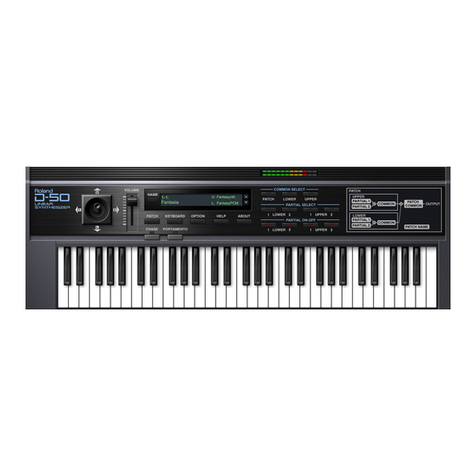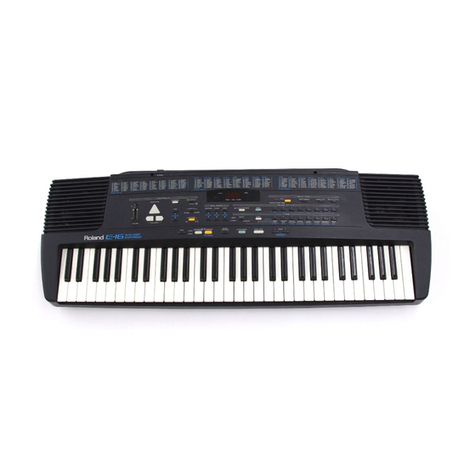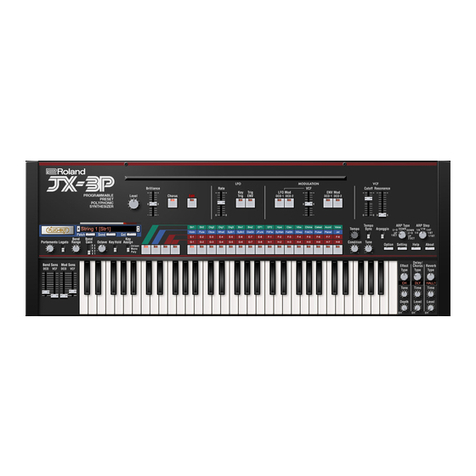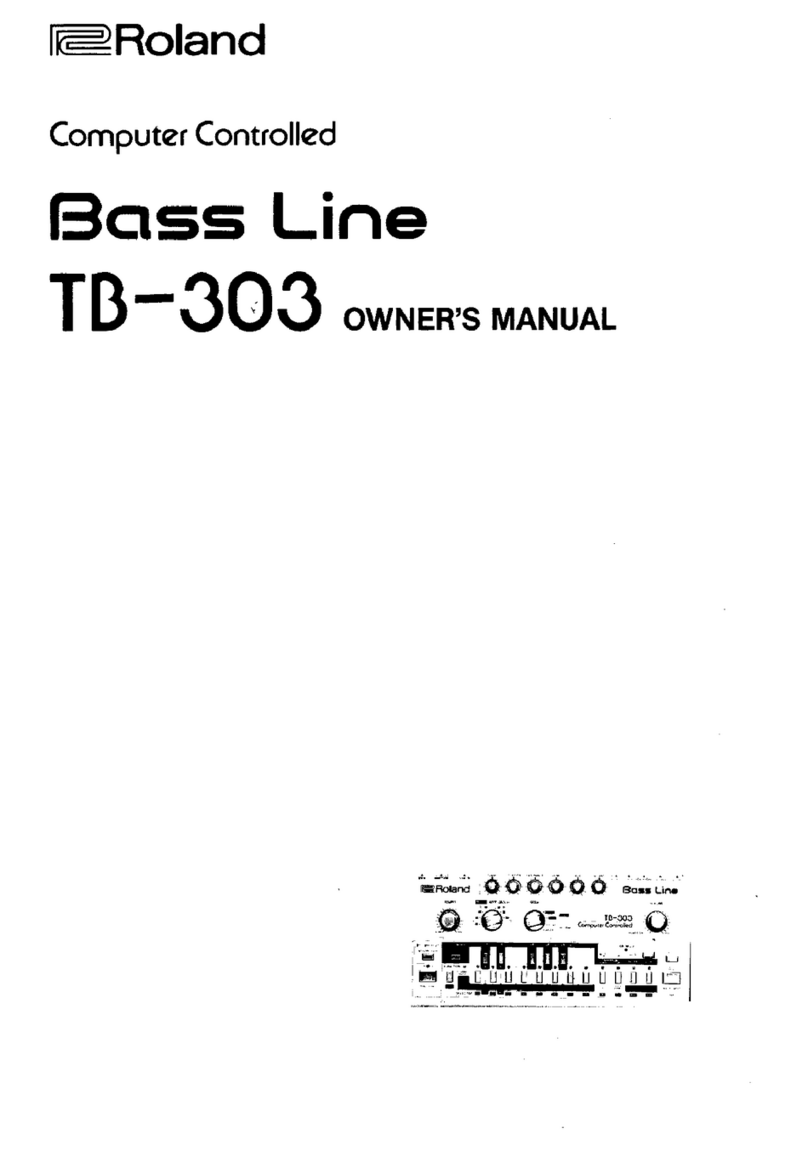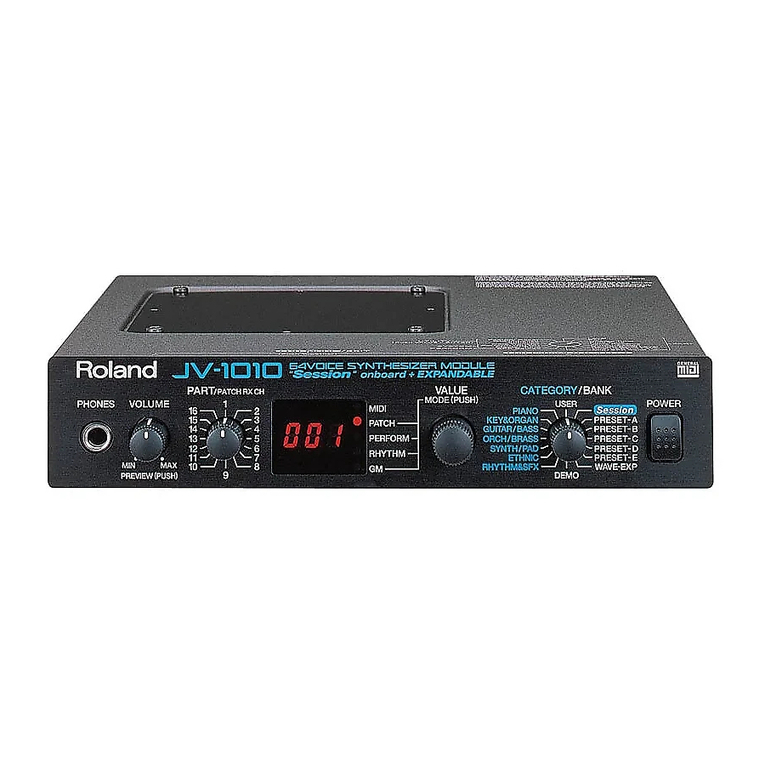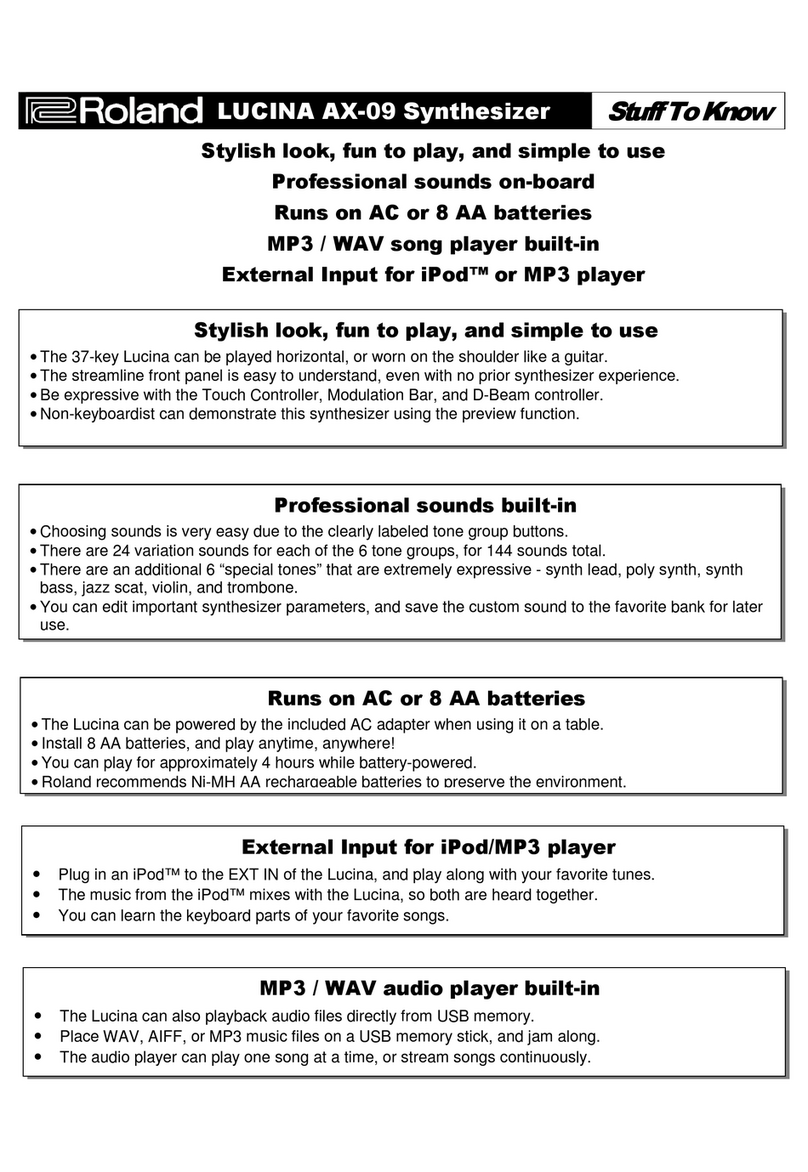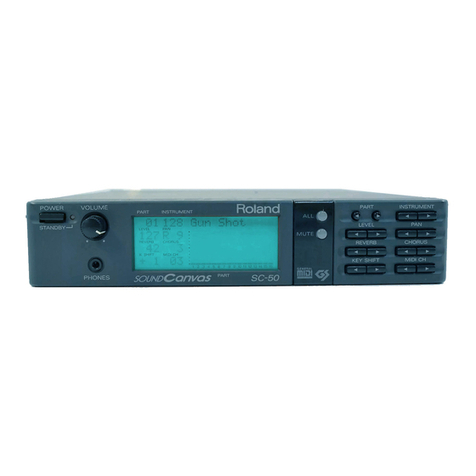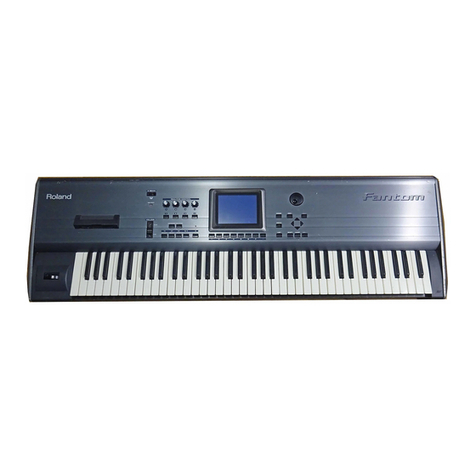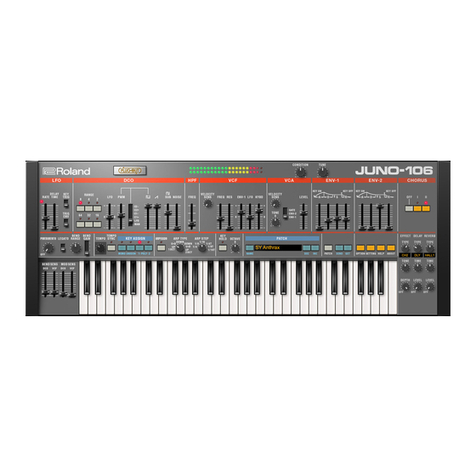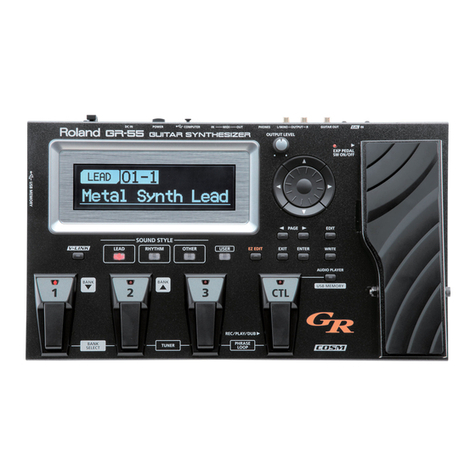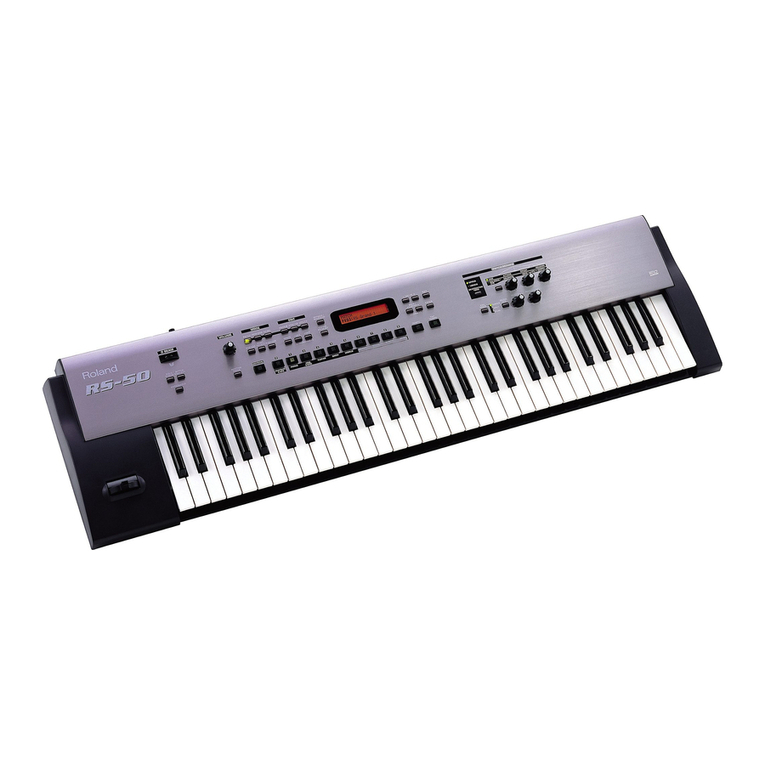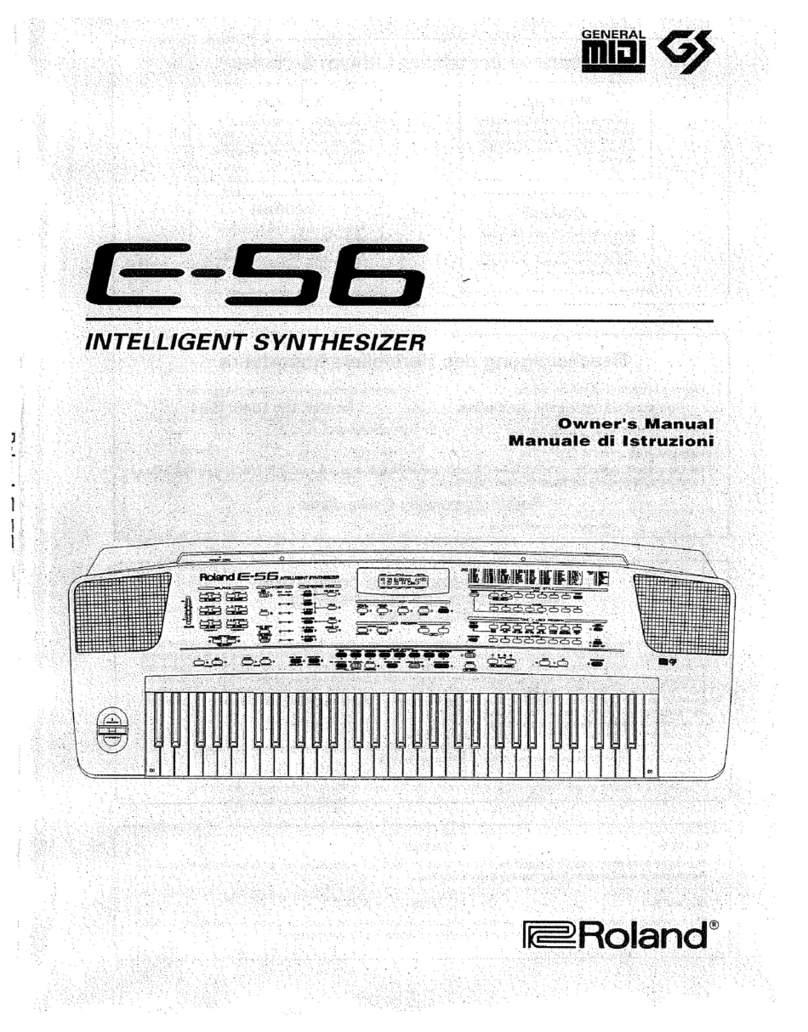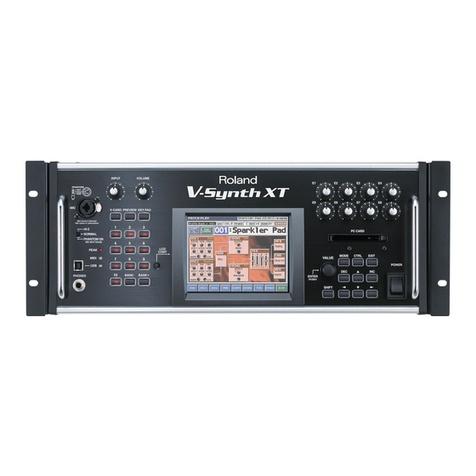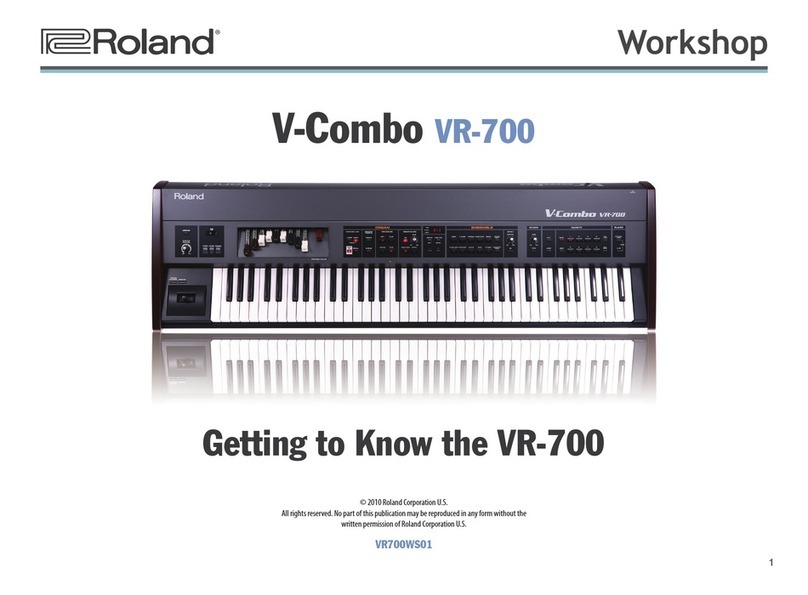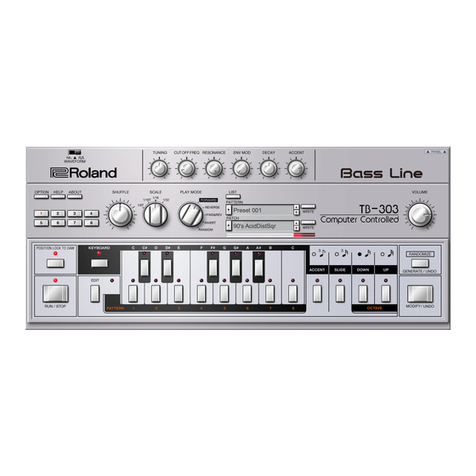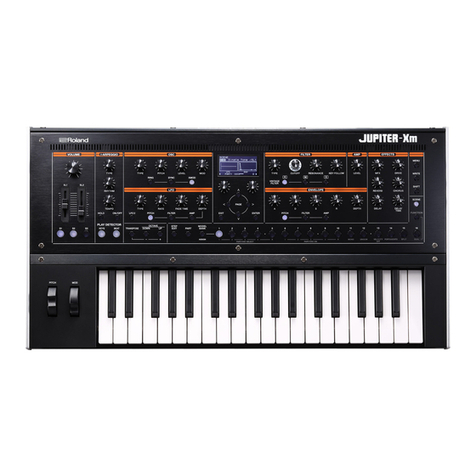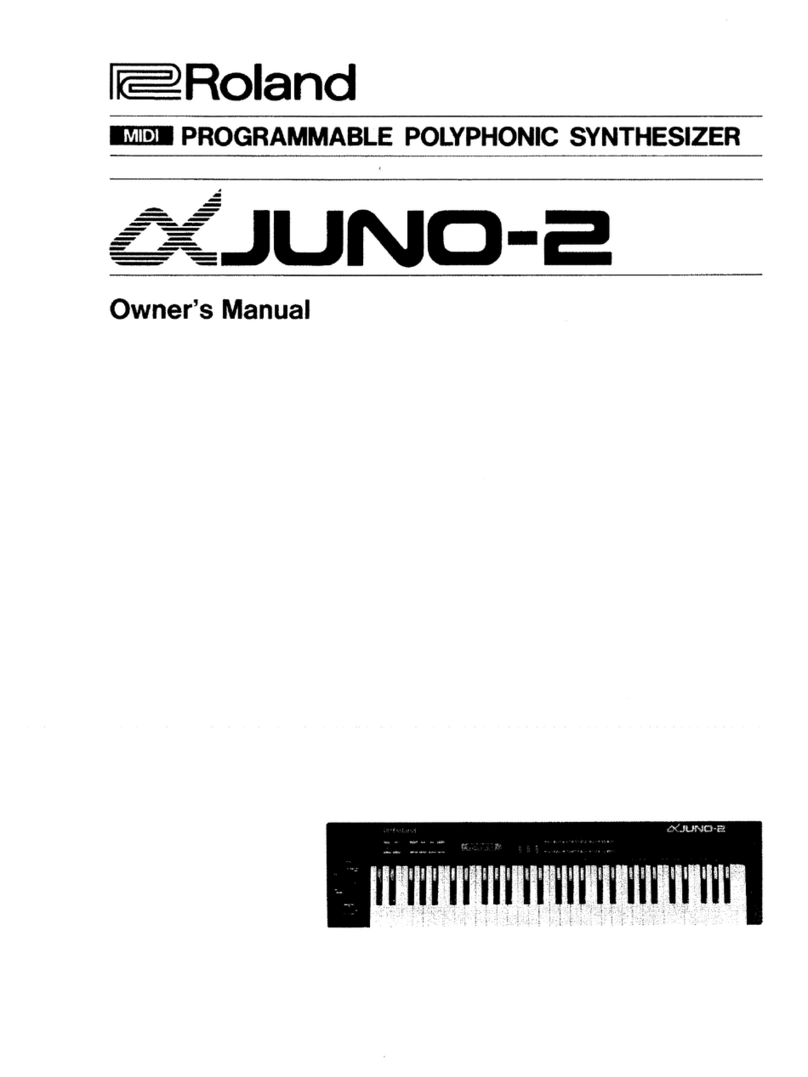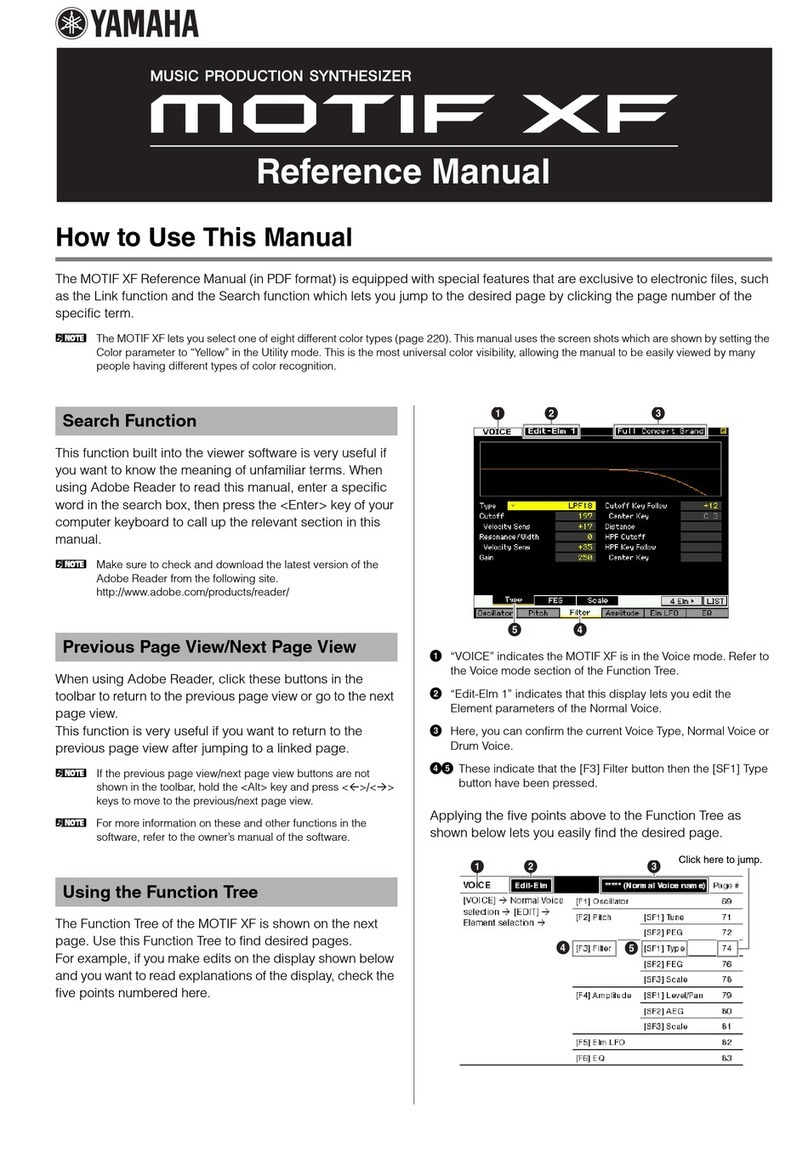VCO- VOLTAGE CONTROLLED OSCILLATOR
The VCO is the primary sound source of the
synthesizer and generates the basic waveforms.
The frequency or pitch of these waveforms
is controlled by acontrol voltage.
SH-7 incorporates two independent VCO's,
VCO-1 and VCO-2. VCO-1 produces five
different square waves of 2', 4', 8', 16', and 32'.
This feet-series output is distinguished as
VCO-1 (A). VCO-1 (B) is exactly the same as
VCO-2. When achord of two notes is played on
the keyboard, VCO-1 (A,B) produces the higher
pitch and VCO-2 the lower.
VCO CONTROL VOLTAGE INPUTS
The most important control of VCO pitch is
by means of the keyboard control voltage and
the BENDER control voltage. The keyboard
control voltage is internally connected to the
VCO through the KEY MODE switch. The
BENDER control voltage is connected through
the BENDER SENSITIVITY controls.
Other sources of control voltage for control of
the VCO are: the LFO, AUTOBEND voltage,
and the S/H. Each of these may be fed to the
VCO in the amounts needed to produce the
desired effects. Since (A) and (B) represent two
parts of the same VCO, they are both con
trolled by the same set of control voltage inpu
sliders.
With two note performance, it is recommende
that the input levels for one VCO be the same
as the corresponding effect for the other VCO.
1.LFO
This slider determines the depth of control the
LFO (Low Frequency Oscillator) will have on
each VCO. It can be used for vibrato effects,
and for large sweeping pitch changes.
2. AUTOBEND
This control adds achange of pitch at the
beginning of each note played. By raising this
control, the VCO pitch is controlled by ay
shape or at_shape voltage envelope so that
the sound starts with alower or higher pitch.
When the Y" shaped bend is used, the human
voice, whistling, and other sound sources which
begin on lower pitches, will sound more real
and natural. When the K._. shaped bend is
employed, chirping sounds of birds can be
obtained.
3. S/H (SAMPLE &HOLD)
This is for controlling VCO pitch with the S/H
output. When this control is raised, random
notes of irregular pitches and staircase changes
of pitch for arpeggio-like effects can be pro-
duced. With the SH-7, the envelope generator
can be triggered with changes in the pitches
produced by the S/H. Set the KEY MODE
switch (see page 8) to EXT CV/GATE/IS/H)
to trigger the envelope generator with the S/H
clock pulses. For this mode of operation, there
should be no connection to the GATE INPUT
jack, otherwise the envelope generator will be
triggered from the external source.
4. AUTOBEND TIME
This controls the time required for the VCO to
return to its normal pitch when using the
AUTOBEND. Turning the knob clockwise
increases the time. Normally, this control is
set between and 5; special effects are obtained
with higher settings.
5. POLARITY
This switch changes the autobend polarity.
VCO-2
The sound will start with ahigher pitch when
set to the Jv_ position and alower pitch at
the yposition. The K_ shape bend is
normally used. The Vshape bend is used for
special effects like chirping of birds.
6. VCO-2 TUNING
This control is for the tuning of VCO-2 only
and is used to match the pitches of VCO-2 to
VCO-1; or for purposely mistuning, or to
produce tunings of musical intervals. The range
of this control is ±700 cents (700 cents =
perfect fifth), or, with Cas the center, from the
Fbelow to the Gabove.
7. SYNC SWITCH
Turning this switch ON will lock the frequency
of VCO-2 to that of VCO-1 so as to completely
eliminate beat frequencies caused by slight
mistuning. Besides unison, the VCO frequencies
will lock at various octave intervals also. Since
other intervals become impossible, the two
voice feature of the keyboard is no longer
operable.
8. VCO-1 (A) FEET SERIES MIXER
The (A) portion of VCO-1 simultaneously
produces five square waves which can be mixed
together in any desired ratio. As shown in
the drawing on the right, when the synthesizer is
set to produce the pitch of middle C, the
square waves produce pitches one and two
octaves above and below middle C.
Interesting sounds can be produced by mixing
the 2' output with the 8' output, or the 2'
output with the 16' output. The 2' +8' com-
bination produces avibraphone-like sound.
Using all of the outputs together produces very
large full sounds.
Raising and lowering these controls has no
effect on the total sound level at the output of
the synthesizer; the sound level will remain the
same whether one or all the controls are raised.
2'
fIZE
^-JUUU1T
-juu
-&- 16'
32'
2' —8' mixed.
9
